The Philosophy and Science of Preserving Biodiversity
Biodiversity is not just a buzzword; it's the very fabric of life on Earth. Imagine a world where every species plays a unique role, much like instruments in a symphony. Each note contributes to a harmonious whole, creating a balance that sustains ecosystems and, ultimately, human life. The philosophy of preserving biodiversity hinges on understanding this intricate web of life and our place within it. As we delve into the philosophical and scientific aspects of biodiversity conservation, we uncover the profound implications it holds for ecological balance, human well-being, and our ethical responsibilities toward the planet.
At its core, the philosophy of biodiversity conservation challenges us to reflect on our values and the moral obligations we hold. Why should we care about species that seem distant or irrelevant to our daily lives? The answer lies in the intrinsic value of all living organisms. Each species, no matter how small or seemingly insignificant, contributes to the greater ecosystem. From the tiniest microorganisms to majestic elephants, every organism has a role to play, and their extinction can lead to unforeseen consequences. This interconnectedness is a central theme in both philosophy and science, emphasizing that our survival is intricately linked to the health of the planet.
From a scientific standpoint, biodiversity is vital for ecosystem services that support life. These services include clean air and water, pollination of crops, and disease regulation. Without biodiversity, these services would falter, impacting food security and health. This raises a critical question: how do we balance our needs with the preservation of biodiversity? The answer lies in sustainable practices that respect the limits of our natural resources while fostering a thriving environment.
Moreover, as we face the mounting threats to biodiversity, such as climate change and habitat destruction, the urgency for action becomes clearer. The scientific community emphasizes the need for interdisciplinary approaches that integrate ethics, ecology, and economics. By understanding the philosophical implications of our actions, we can better advocate for policies that protect our natural world. This holistic view encourages us to see ourselves as stewards of the Earth, responsible for nurturing the delicate balance of life.
In conclusion, the philosophy and science of preserving biodiversity are not just academic pursuits; they are calls to action. As we navigate the challenges of the 21st century, it is imperative that we recognize our ethical responsibilities and the interconnectedness of all life. By embracing these principles, we can work towards a future where biodiversity thrives, ensuring a healthier planet for generations to come.
- Why is biodiversity important? Biodiversity is crucial for ecosystem stability, human health, and the overall functioning of the environment.
- What are the main threats to biodiversity? Major threats include climate change, habitat destruction, pollution, and invasive species.
- How can individuals contribute to biodiversity conservation? Individuals can help by supporting conservation organizations, practicing sustainable living, and educating others about the importance of biodiversity.
- What role do governments play in biodiversity conservation? Governments are essential in creating and enforcing policies and regulations that protect ecosystems and promote sustainable practices.

The Ethical Imperative of Biodiversity
Understanding the moral obligations we have to protect biodiversity is crucial. At its core, the ethical imperative of biodiversity revolves around the idea that all living organisms possess an intrinsic value, irrespective of their utility to humans. This perspective challenges us to rethink our relationship with nature and recognize that our well-being is intertwined with the health of the planet. Just like a finely woven tapestry, each strand—be it a tiny insect or a towering tree—plays a role in the overall picture of life on Earth.
Philosophically, several frameworks help elucidate why we should care about biodiversity. One prominent view is the biocentric perspective, which posits that all forms of life have equal worth. This view encourages us to advocate for the rights of all species, arguing that they deserve protection not merely for their benefits to humans, but for their own sake. In contrast, the anthropocentric perspective focuses on the benefits that biodiversity provides to humanity, such as ecosystem services, food security, and cultural enrichment. While both perspectives offer valuable insights, a balanced approach that incorporates both can lead to more effective conservation strategies.
Moreover, the ethical responsibilities we hold extend beyond merely protecting endangered species. They encompass the need to foster environments where all organisms can thrive. This is where the concept of intergenerational justice comes into play. It challenges us to consider the legacy we leave for future generations. Are we willing to sacrifice the rich diversity of life for short-term gains? The answer, ideally, should be a resounding no. The preservation of biodiversity is not just an environmental issue; it is a profound ethical challenge that requires collective action.
To put it simply, biodiversity is the backbone of ecological balance. It ensures that ecosystems function properly, providing essential services like clean air, water filtration, and pollination of crops. The loss of biodiversity, therefore, is not just a loss of species; it is a loss of stability and resilience in the environments that sustain us. As we navigate the complexities of modern life, we must remember that our ethical obligation to protect biodiversity is not just about preserving nature but about ensuring our own survival and well-being.
In conclusion, the ethical imperative of biodiversity is a call to action. It reminds us that we are stewards of this planet, responsible for the myriad forms of life that inhabit it. As we ponder our role in this intricate web of life, let us embrace our responsibilities with a sense of urgency and commitment. The future of biodiversity—and indeed, our own future—depends on it.
- Why is biodiversity important? Biodiversity is essential for ecosystem stability, resilience, and the provision of vital services that support human life.
- What ethical frameworks support biodiversity conservation? Both biocentric and anthropocentric perspectives provide valuable insights into the moral obligations we have toward protecting biodiversity.
- How can individuals contribute to biodiversity conservation? Individuals can contribute by supporting conservation organizations, participating in local initiatives, and making sustainable choices in their daily lives.
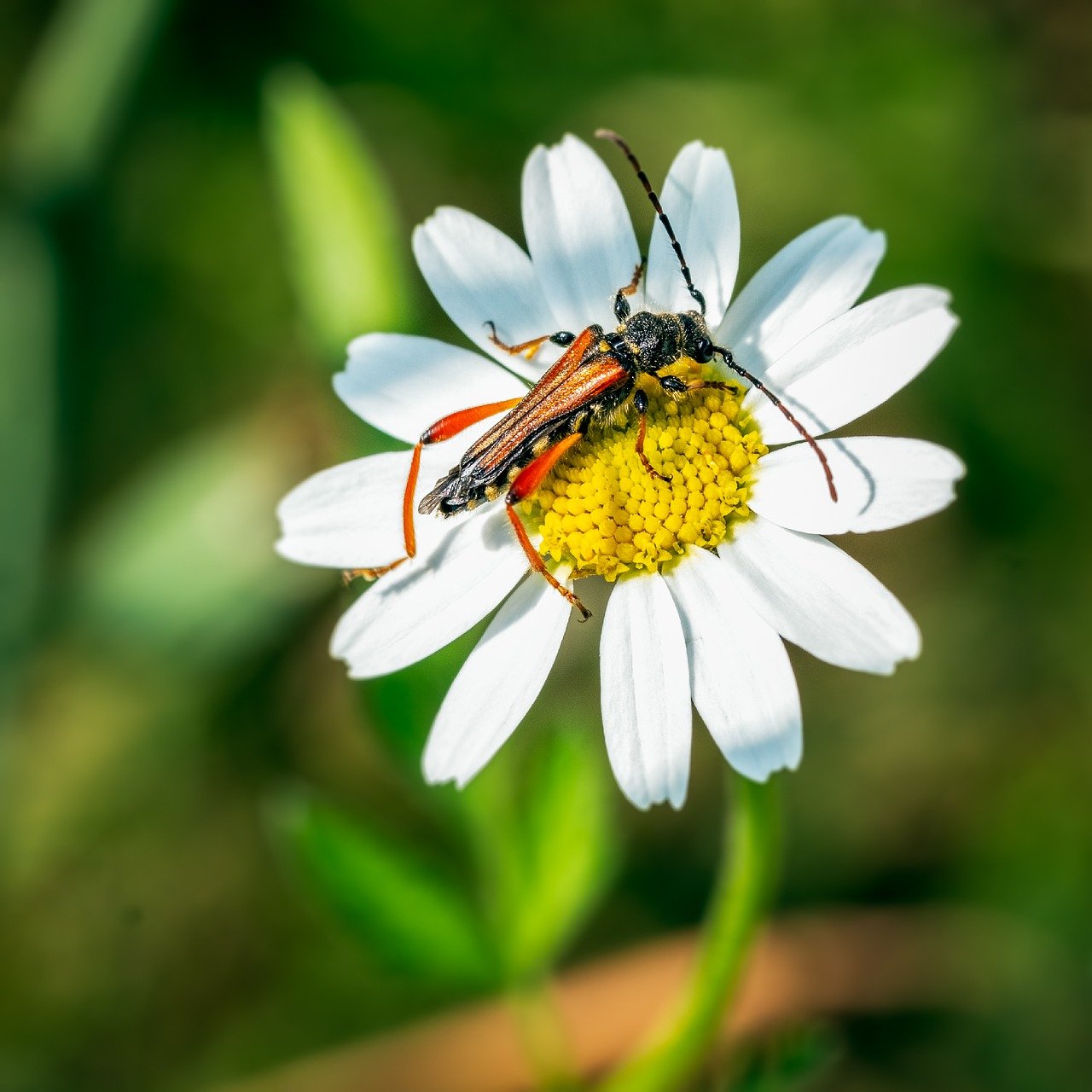
The Role of Ecosystems in Biodiversity
Ecosystems are the intricate webs of life that support a vast array of species, from the tiniest microorganisms to the largest mammals. They are not just backdrops for life; they are the very foundation that sustains it. Think of ecosystems as bustling cities where each organism plays a unique role, contributing to the overall health and functionality of the community. The rich tapestry of life found within these ecosystems is what we refer to as biodiversity, and it is essential for maintaining ecological balance.
One of the most fascinating aspects of ecosystems is their ability to provide essential services that benefit both the environment and humanity. These services include:
- Provisioning Services: These are the products we derive from ecosystems, such as food, fresh water, and raw materials.
- Regulating Services: Ecosystems help regulate climate, water quality, and disease, acting as natural buffers against environmental changes.
- Supporting Services: These include nutrient cycling and soil formation, which are crucial for sustaining life.
- Cultural Services: Ecosystems provide recreational, aesthetic, and spiritual benefits that enrich our lives.
The interdependence of species within ecosystems is a marvel of nature. Each organism, no matter how small, plays a critical role in maintaining the health of its environment. For instance, consider the role of bees in pollination. Without these tiny workers, many plants would fail to reproduce, leading to a cascade of negative effects on food supplies and other species that rely on those plants. This interconnectedness highlights the importance of preserving ecosystems to ensure the survival of diverse species.
However, the health of ecosystems is under threat from various human activities. Urbanization, pollution, and climate change are just a few factors that disrupt these delicate systems. When ecosystems are compromised, biodiversity suffers, and the services they provide can diminish significantly. For example, the loss of wetlands not only affects the species that inhabit them but also reduces natural water filtration, leading to poorer water quality for humans and wildlife alike.
To illustrate the importance of ecosystems in supporting biodiversity, consider the following table that outlines various ecosystems and their contributions to biodiversity:
| Ecosystem Type | Key Contributions to Biodiversity |
|---|---|
| Forests | Home to over 80% of terrestrial species; they provide habitat, food, and shelter. |
| Wetlands | Support diverse aquatic life; act as natural water filters and flood buffers. |
| Grasslands | Support large herbivores and numerous bird species; crucial for soil health. |
| Coral Reefs | Provide habitat for thousands of marine species; protect coastlines from erosion. |
In conclusion, ecosystems are vital for the sustenance of biodiversity. They not only provide essential services that support human life but also create a rich environment where countless species can thrive. As stewards of the planet, it is our responsibility to protect these ecosystems and the biodiversity they harbor. By understanding the role of ecosystems in biodiversity, we can better appreciate the interconnectedness of life and the urgent need for conservation efforts.
Q: Why is biodiversity important?
A: Biodiversity is crucial for ecosystem health, resilience, and providing essential services that support human life, such as clean air, water, and food.
Q: How do ecosystems contribute to biodiversity?
A: Ecosystems provide habitats, food, and resources for various species, enabling them to thrive and maintain ecological balance.
Q: What are the main threats to ecosystems?
A: Major threats include habitat destruction, pollution, climate change, and invasive species, all of which can significantly impact biodiversity.
Q: How can individuals help preserve biodiversity?
A: Individuals can contribute by supporting conservation efforts, reducing waste, using resources sustainably, and advocating for policies that protect ecosystems.

The world is a vibrant tapestry of life, woven together by countless species and ecosystems, each playing a unique role in the grand scheme of our planet. However, this delicate balance is increasingly under threat from various factors that jeopardize biodiversity. Understanding these threats is essential for developing effective conservation strategies. So, what are the primary culprits driving biodiversity loss? Let’s dive into some of the most pressing issues.
One of the most significant threats to biodiversity is habitat loss. As human populations grow, we expand our cities, convert forests into agricultural land, and exploit natural resources at an unprecedented rate. This relentless expansion not only destroys the habitats of countless species but also fragments ecosystems, making it difficult for wildlife to thrive. Imagine a once-thriving forest ecosystem now reduced to isolated patches where animals can no longer roam freely or find mates. The consequences of such fragmentation can be devastating, leading to reduced genetic diversity and increased vulnerability to extinction.
Another major threat is climate change. The Earth’s climate is changing at an alarming rate, primarily due to human activities such as burning fossil fuels and deforestation. These changes affect species distribution, forcing them to migrate to cooler areas or higher altitudes. However, not all species can adapt quickly enough to these shifts. For instance, polar bears are losing their sea ice habitat, which is crucial for hunting seals, their primary food source. In this context, climate change acts as a double-edged sword, exacerbating existing threats while introducing new challenges.
Moreover, pollution poses a significant risk to biodiversity. Chemicals, plastics, and waste products contaminate our air, water, and soil, leading to dire consequences for wildlife. For example, aquatic ecosystems are particularly vulnerable to pollutants, resulting in toxic conditions that can decimate fish populations and disrupt entire food chains. The impact of pollution can be likened to a silent killer, insidiously eroding the foundations of biodiversity without immediate visibility.
Lastly, we cannot overlook the impact of invasive species. These are non-native organisms that, when introduced to a new environment, can outcompete, prey on, or bring diseases to native species. The introduction of the brown tree snake to Guam is a classic example, where it has led to the extinction of several bird species. Invasive species can disrupt the balance of ecosystems, leading to a cascade of negative effects on biodiversity.
To sum it up, the threats to biodiversity are multifaceted and interconnected. Addressing these challenges requires a comprehensive understanding of how they interact and affect each other. By recognizing the urgency of these issues, we can better mobilize efforts towards conservation and restoration. Below is a summary table of the primary threats to biodiversity:
| Threat | Description | Examples |
|---|---|---|
| Habitat Loss | Destruction and fragmentation of natural habitats due to human activities. | Urbanization, deforestation, agriculture |
| Climate Change | Changes in climate patterns affecting species distribution and ecosystem health. | Polar bear habitat loss, coral bleaching |
| Pollution | Contamination of air, water, and soil harming wildlife and ecosystems. | Plastic waste, chemical runoff |
| Invasive Species | Non-native organisms that disrupt local ecosystems. | Brown tree snake in Guam, zebra mussels in the Great Lakes |
In conclusion, the threats to biodiversity are critical challenges that require our immediate attention. By understanding these issues, we can take informed actions to protect our planet's rich tapestry of life.
- What is biodiversity? Biodiversity refers to the variety of life on Earth, including the diversity of species, ecosystems, and genetic variations.
- Why is biodiversity important? Biodiversity is essential for ecological balance, providing vital services such as pollination, nutrient cycling, and climate regulation.
- What can individuals do to help preserve biodiversity? Individuals can help by supporting conservation efforts, reducing waste, using sustainable products, and advocating for policies that protect natural habitats.
- How does climate change affect biodiversity? Climate change alters habitats and species distributions, making it difficult for many organisms to survive and adapt.
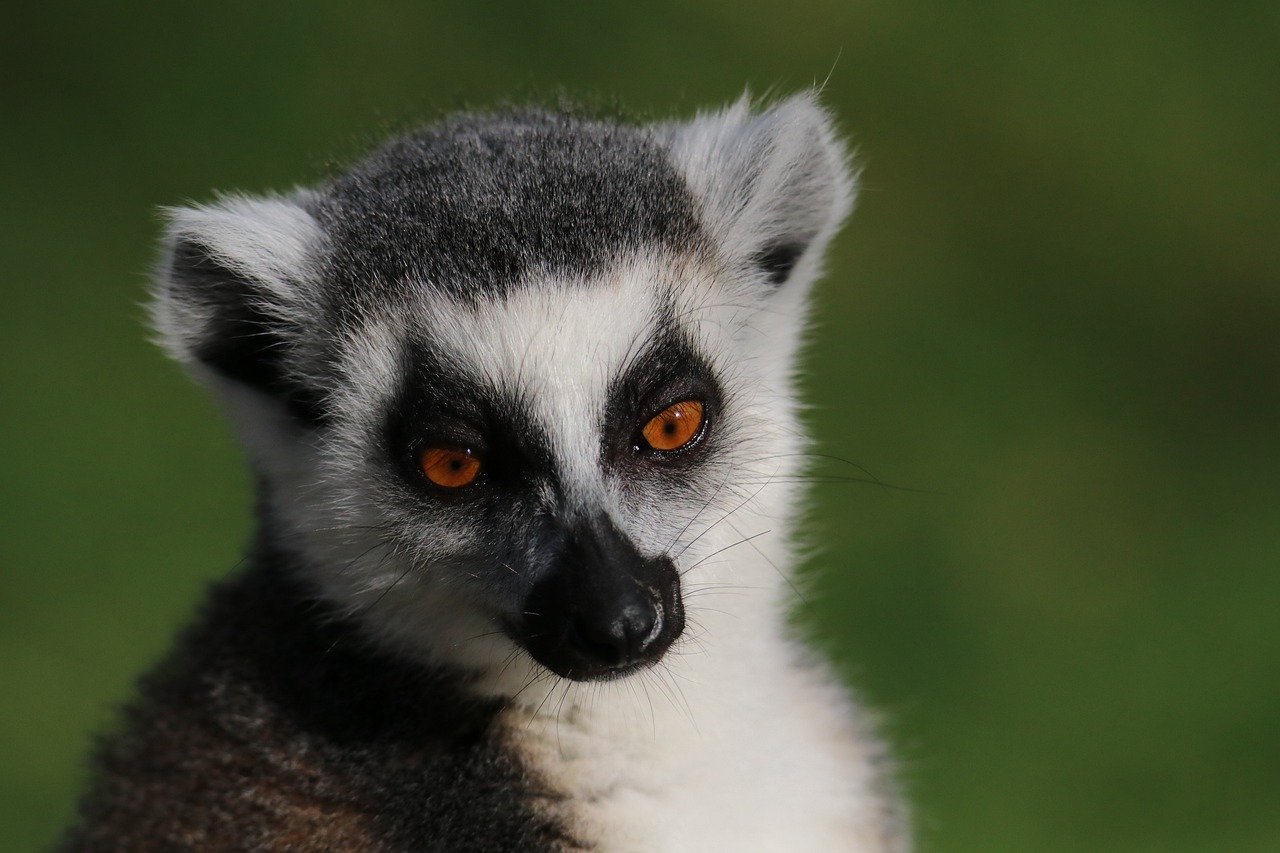
Climate change is not just a buzzword; it's a reality that is reshaping our planet in ways we never imagined. As temperatures rise and weather patterns shift, the delicate balance of biodiversity is being pushed to its limits. Imagine a world where the vibrant colors of coral reefs fade to dull gray, where the songs of migratory birds become a distant memory, and where entire species are driven to extinction because their habitats can no longer support them. This isn't just a nightmare scenario; it's happening right now.
The impact of climate change on biodiversity is profound and multifaceted. For instance, as temperatures increase, many species find themselves struggling to adapt. Some may migrate to cooler areas, while others may face extinction if they cannot keep pace with the changing conditions. A recent study highlighted that over 1 million species are currently at risk of extinction due to climate-related factors. The loss of these species not only diminishes our planet's rich tapestry of life but also disrupts the ecosystems that provide essential services to humanity, such as clean air, water, and food.
One of the most alarming effects of climate change is the alteration of migration patterns. Many animals rely on specific cues, such as temperature and daylight, to know when to migrate. As these cues become inconsistent, migratory species may arrive at their destinations too early or too late, missing crucial resources like food and breeding grounds. For example, the Arctic Tern, known for its incredible migratory journey, is experiencing shifts in its feeding grounds due to changing ocean temperatures, which could have cascading effects on its population and the species that rely on it.
Furthermore, climate change exacerbates other threats to biodiversity, such as habitat loss and invasive species. As natural habitats are altered or destroyed, the species that depend on them are left vulnerable. Invasive species, which thrive in disturbed environments, can outcompete native species for resources, leading to further declines in biodiversity. This vicious cycle highlights the urgent need for comprehensive strategies to combat climate change and its impact on our ecosystems.
In conclusion, the effects of climate change on biodiversity are not just environmental issues; they are ethical dilemmas that challenge our responsibility to future generations. We must act now to mitigate these impacts through sustainable practices, conservation efforts, and global cooperation. The clock is ticking, and if we don’t take immediate action, we risk losing not only the beauty of our planet but also the very foundations of life itself.
- What are the main effects of climate change on biodiversity? Climate change leads to habitat loss, altered migration patterns, increased extinction rates, and the spread of invasive species, all of which threaten biodiversity.
- How can we mitigate the impacts of climate change on biodiversity? Mitigation strategies include reducing greenhouse gas emissions, protecting natural habitats, and implementing conservation programs that involve local communities.
- Why is biodiversity important for human well-being? Biodiversity provides essential ecosystem services, such as pollination, water purification, and disease regulation, which are crucial for our survival and quality of life.
- What role do individuals play in preserving biodiversity? Individuals can contribute by supporting sustainable practices, reducing their carbon footprint, and participating in local conservation efforts.
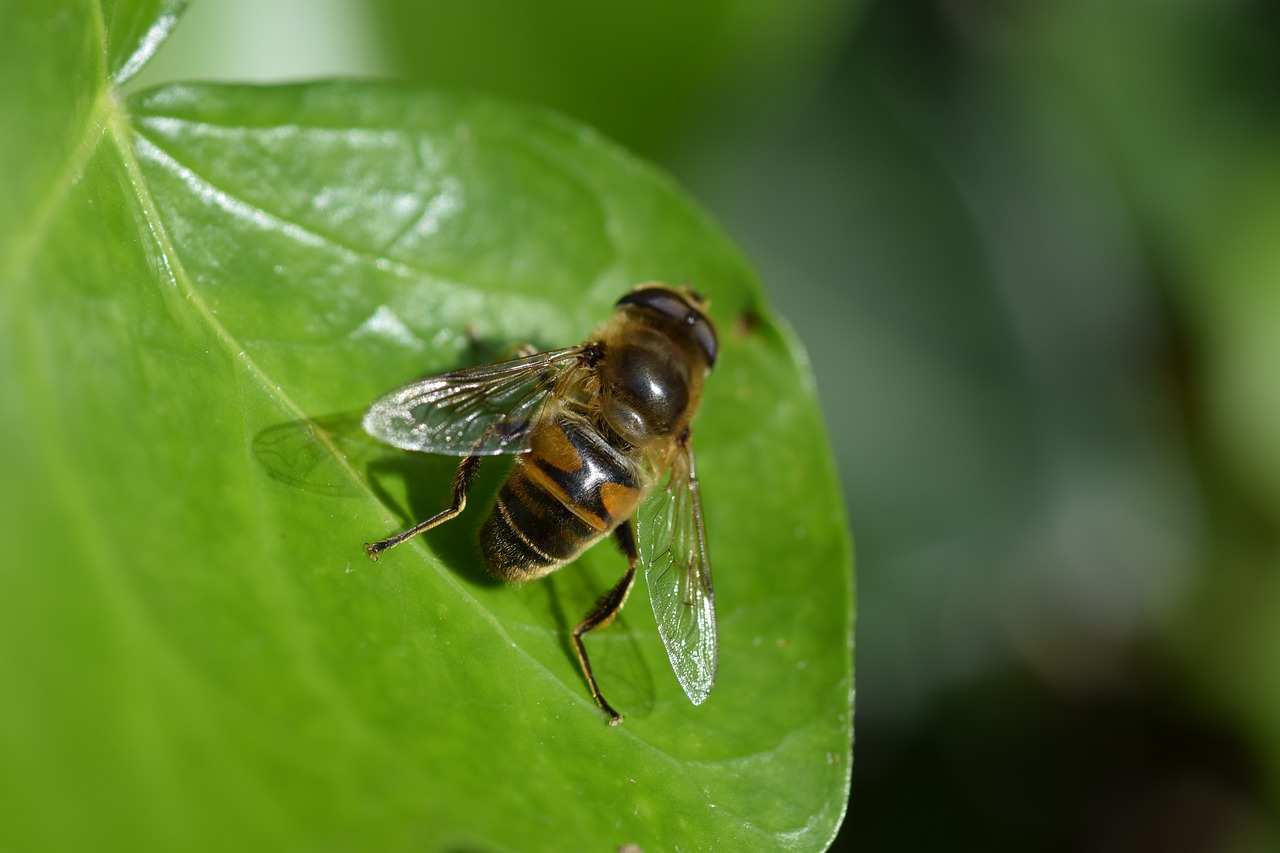
Habitat destruction and fragmentation are among the most significant threats to biodiversity today. Imagine a vibrant, interconnected web of life, where each species plays a role akin to the threads in a tapestry. When we alter or destroy these habitats, we risk unraveling this delicate fabric. The consequences are dire, not just for wildlife, but for human beings as well. As urban areas expand and agricultural practices intensify, natural landscapes are being transformed into patches of isolated ecosystems, leading to a phenomenon known as habitat fragmentation.
This fragmentation can be likened to cutting a highway through a dense forest. While the road may facilitate travel for humans, it disrupts the natural flow of wildlife. Animals are forced to navigate these barriers, which can lead to decreased genetic diversity, as populations become isolated from one another. Over time, this isolation can result in inbreeding, making species more susceptible to diseases and reducing their overall resilience to environmental changes.
Moreover, habitat destruction often occurs through various human activities, including:
- Urbanization: As cities expand, they encroach on natural habitats, leading to the loss of vital ecosystems.
- Deforestation: The clearing of forests for timber, agriculture, or development not only destroys habitats but also contributes to climate change.
- Land Conversion: Transforming natural landscapes into agricultural land or industrial sites drastically alters the ecological balance.
The impact of habitat destruction is not just limited to wildlife. Humans depend on healthy ecosystems for clean air, water, and food. When habitats are lost, the services they provide diminish, leading to consequences such as soil erosion, decreased water quality, and loss of pollinators critical for food production. This interdependence highlights a crucial point: protecting habitats is not merely an environmental issue; it is a matter of human survival.
To combat habitat destruction, we must adopt sustainable practices that prioritize ecological integrity. This includes implementing land-use planning that considers the needs of both people and wildlife, restoring degraded habitats, and establishing protected areas that serve as refuges for biodiversity. By taking these steps, we can work towards ensuring that our planet remains a thriving home for all living organisms.
- What are the main causes of habitat destruction?
Habitat destruction is primarily caused by urbanization, agriculture, deforestation, and industrial development. Each of these activities leads to the loss of natural landscapes and disrupts ecosystems.
- How does habitat fragmentation affect wildlife?
Fragmentation isolates species, reducing genetic diversity and making populations more vulnerable to extinction. It also disrupts migration patterns and access to resources.
- What can individuals do to help combat habitat destruction?
Individuals can help by supporting conservation organizations, reducing their ecological footprint, and advocating for sustainable land-use policies.

When it comes to preserving our planet's rich tapestry of life, effective conservation strategies are not just beneficial; they are absolutely essential. The complexity of biodiversity means that there is no one-size-fits-all solution. Instead, a multifaceted approach is required, combining various methods tailored to specific ecosystems and species. One of the most common strategies involves the establishment of protected areas. These designated zones serve as sanctuaries for endangered species, allowing them to thrive without the pressures of human encroachment. However, creating a protected area is merely the first step. It’s equally important to ensure that these areas are well-managed and monitored to prevent illegal activities such as poaching and logging.
Another promising approach is restoration ecology, which focuses on rehabilitating degraded ecosystems. This can involve replanting native vegetation, removing invasive species, and restoring natural water flows. For instance, wetland restoration not only enhances biodiversity but also provides crucial ecosystem services, such as flood protection and water filtration. The success of restoration projects often hinges on community involvement, as local knowledge and labor can significantly enhance outcomes.
Speaking of community involvement, community-based conservation strategies have gained traction in recent years. These initiatives empower local populations to take charge of their natural resources, fostering a sense of ownership and responsibility. In many cases, communities that are actively engaged in conservation efforts are more likely to see the benefits of preserving their local ecosystems, leading to sustainable practices that benefit both people and wildlife. A notable example is the success of community-managed marine protected areas, where local fishers collaborate to regulate fishing practices, leading to healthier fish populations and improved livelihoods.
To illustrate the effectiveness of various conservation strategies, consider the following table that summarizes different approaches and their outcomes:
| Conservation Strategy | Description | Success Indicators |
|---|---|---|
| Protected Areas | Designated zones for wildlife protection | Increased species populations, reduced poaching |
| Restoration Ecology | Rehabilitating degraded ecosystems | Improved ecosystem health, biodiversity recovery |
| Community-Based Conservation | Local management of natural resources | Enhanced local livelihoods, sustainable practices |
Of course, while these strategies are promising, they are not without their challenges. Funding is often a significant hurdle, as conservation efforts require substantial financial resources for planning, implementation, and ongoing management. Moreover, the effectiveness of these strategies can be compromised by political instability, climate change, and competing land uses. Therefore, it is crucial for conservationists to advocate for robust policies that support sustainable practices and provide the necessary funding to ensure these strategies can be effectively implemented.
Ultimately, the success of conservation strategies hinges on collaboration among various stakeholders, including governments, non-profit organizations, and local communities. By working together, we can create a cohesive approach that not only protects our planet's biodiversity but also enhances the quality of life for future generations. After all, biodiversity is more than just a collection of species; it is the foundation upon which our ecosystems—and ultimately our survival—depend.
- What is biodiversity? Biodiversity refers to the variety of life found on Earth, including the variety of species, genetic diversity, and the ecosystems they form.
- Why is biodiversity important? Biodiversity is crucial for ecosystem stability, providing essential services like pollination, water purification, and climate regulation.
- How can individuals help conserve biodiversity? Individuals can contribute by supporting sustainable practices, reducing waste, and participating in local conservation efforts.
- What are some examples of conservation strategies? Examples include creating protected areas, engaging in restoration ecology, and implementing community-based conservation initiatives.
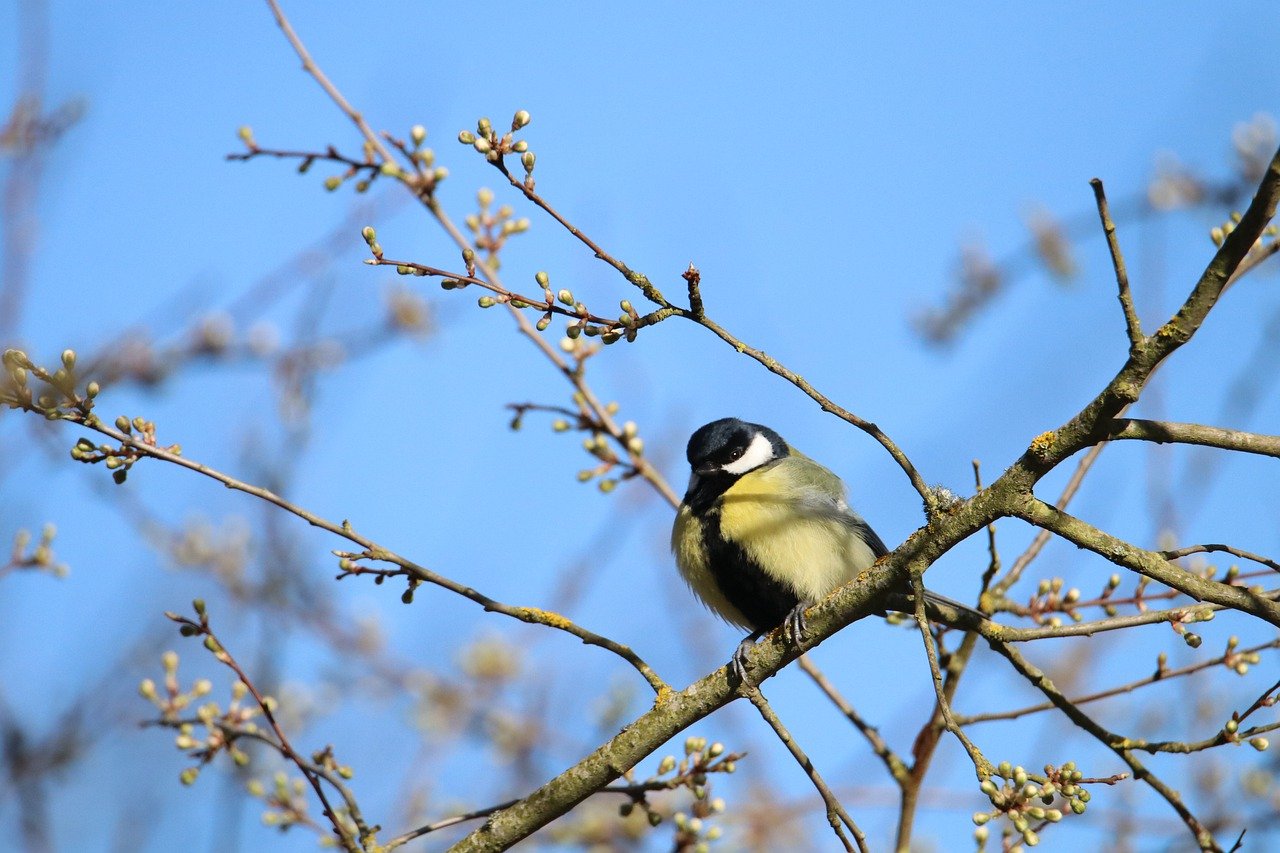
Genetic diversity is like the secret sauce that keeps the recipe of life flavorful and resilient. Imagine a garden filled with different types of flowers; each one unique in color, shape, and fragrance. Just like that garden, genetic diversity within species ensures that life on Earth can adapt, thrive, and survive against the backdrop of changing environments and challenges. Without this diversity, populations become more susceptible to diseases, environmental changes, and other threats that could lead to their extinction.
Think about it: when a species has a wide range of genetic traits, it’s better equipped to handle stressors. For example, some plants might be more drought-resistant, while others can thrive in nutrient-poor soils. This variety allows ecosystems to remain stable and continue providing essential services, such as clean air, water, and food. In fact, the loss of genetic diversity can lead to a domino effect, jeopardizing entire ecosystems and the benefits they provide to humanity.
Moreover, genetic diversity plays a crucial role in agriculture. Farmers rely on a variety of crop strains to ensure food security. If a single strain is wiped out by a disease, the entire food supply could be at risk. This is why conserving genetic diversity in both wild and domesticated species is not just an environmental issue; it’s a matter of human survival. The Food and Agriculture Organization (FAO) emphasizes that preserving genetic diversity in crops and livestock is vital for adapting to changing climates and ensuring food production.
| Benefits of Genetic Diversity | Examples |
|---|---|
| Increased Resilience | Species can adapt to diseases and climate change. |
| Enhanced Ecosystem Services | Pollination, water purification, and soil fertility. |
| Food Security | Diverse crops reduce the risk of total crop failure. |
| Medicinal Resources | Diverse genetic materials lead to new medicines. |
Additionally, genetic diversity is essential for the evolution of species. As environments change, species with a broader genetic base are more likely to produce individuals that can survive and reproduce under new conditions. This evolutionary process is what keeps life on Earth dynamic and ever-adapting. Without genetic diversity, evolution stagnates, leaving species vulnerable to extinction.
In conclusion, the importance of genetic diversity cannot be overstated. It is the foundation upon which ecosystems are built and the key to resilience in the face of change. As stewards of the Earth, we must recognize our role in protecting this diversity. Whether through conservation efforts or sustainable practices, every action counts in preserving the intricate web of life that sustains us all.
- What is genetic diversity? Genetic diversity refers to the variety of genes within a species, which enables adaptation and survival.
- Why is genetic diversity important? It is crucial for resilience against diseases, environmental changes, and for maintaining ecosystem stability.
- How can we protect genetic diversity? By supporting conservation efforts, sustainable agriculture, and protecting natural habitats.
- What are the consequences of losing genetic diversity? Loss of genetic diversity can lead to increased vulnerability to diseases, reduced adaptability, and potential extinction of species.
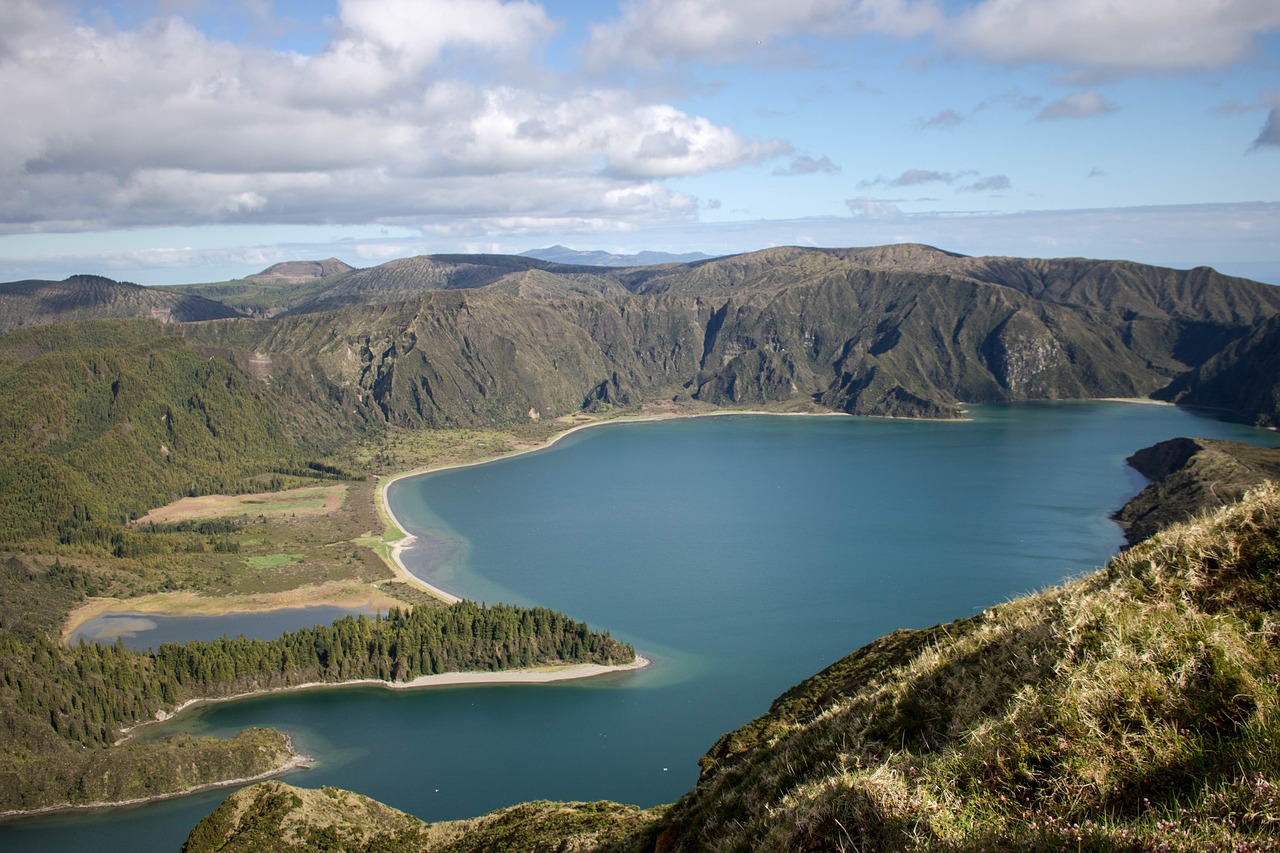
When it comes to preserving biodiversity, one of the most powerful tools we have in our arsenal is the active involvement of local communities. Imagine a world where the people who live closest to nature are the very ones protecting it. This isn’t just a dream; it’s a reality that is being shaped by community-led conservation efforts across the globe. These initiatives often yield remarkable results, as they are rooted in the local culture, knowledge, and values, making them more effective than top-down approaches. So, how does community involvement actually make a difference?
First and foremost, local communities possess invaluable knowledge about their environment. They understand the rhythms of nature, the behaviors of local wildlife, and the ecological balance of their surroundings. This intimate connection allows them to identify issues and solutions that outsiders might overlook. For instance, in many indigenous cultures, traditional ecological knowledge has been passed down through generations, providing insights into sustainable practices that modern science is only beginning to understand.
Moreover, community involvement fosters a sense of ownership and responsibility. When people feel that they have a stake in their environment, they are more likely to protect it. This is evident in various successful case studies around the world. For example, in Kenya, community conservancies have emerged as a powerful model for wildlife conservation. By involving local residents in decision-making processes and allowing them to benefit economically from tourism, these conservancies have not only reduced poaching but have also enhanced local livelihoods.
Additionally, community engagement in conservation can lead to innovative solutions tailored to local needs. For instance, in the Amazon rainforest, communities have developed agroforestry systems that allow them to cultivate crops while preserving the forest. This dual approach not only supports their economic needs but also contributes to the conservation of biodiversity. By blending traditional practices with modern conservation techniques, communities can create sustainable systems that benefit both people and nature.
However, it’s essential to recognize that community involvement is not without its challenges. Conflicts can arise, especially when external interests clash with local priorities. For example, large-scale agricultural projects or industrial developments can threaten the very ecosystems that communities rely on. Therefore, it is crucial to establish frameworks that promote collaboration and ensure that the voices of local people are heard in conservation dialogues.
In conclusion, community involvement in conservation is not just beneficial; it is essential for the sustainable preservation of biodiversity. By empowering local populations and respecting their knowledge and rights, we can create a more effective and equitable approach to conservation. The road ahead may be fraught with challenges, but the potential for positive change is immense. Together, we can forge a path toward a future where biodiversity thrives, supported by the very communities that call these ecosystems home.
- Why is community involvement important in conservation?
Community involvement is crucial because local people have unique knowledge of their ecosystems and a vested interest in their health. When communities are engaged, conservation efforts are often more effective and sustainable. - What are some examples of successful community-led conservation initiatives?
Examples include community conservancies in Kenya, agroforestry systems in the Amazon, and local fisheries management in various coastal regions. - How can communities be supported in conservation efforts?
Support can come in the form of funding, training, and recognition of indigenous rights, as well as creating partnerships with NGOs and government bodies.

When it comes to safeguarding our planet's rich tapestry of life, robust policies and legislation play a pivotal role. These frameworks serve as the backbone of biodiversity conservation efforts, ensuring that we have the necessary guidelines to protect ecosystems and species from the myriad threats they face. Without effective policies, our collective efforts to preserve biodiversity would be akin to building a house without a foundation—unstable and likely to collapse under pressure.
At the international level, agreements such as the Convention on Biological Diversity (CBD) provide a comprehensive framework for nations to collaborate on biodiversity issues. Established in 1993, the CBD aims to promote sustainable development through the conservation of biological diversity, the sustainable use of its components, and the fair sharing of benefits arising from genetic resources. This convention underscores the importance of global cooperation, as biodiversity knows no borders; species migrate, ecosystems interconnect, and the impacts of climate change are felt universally.
On a national scale, countries implement their own laws and regulations to align with international standards while addressing local biodiversity needs. For instance, many nations have developed Endangered Species Acts that protect threatened and endangered species from extinction. These acts often include measures such as habitat protection, recovery plans, and legal penalties for poaching or habitat destruction. However, the effectiveness of these laws often hinges on adequate funding and public support, which can be challenging to secure.
Moreover, local regulations play a crucial role in biodiversity conservation. Municipalities can enact zoning laws that limit urban development in sensitive areas, thereby preserving vital habitats. Community-led initiatives, such as local wildlife reserves or conservation easements, also demonstrate how grassroots efforts can complement formal legislation. These local actions not only protect biodiversity but also foster a sense of stewardship among residents.
| Type of Legislation | Purpose | Examples |
|---|---|---|
| International Agreements | Facilitate global cooperation on biodiversity issues | Convention on Biological Diversity (CBD) |
| National Laws | Protect endangered species and their habitats | Endangered Species Act (USA) |
| Local Regulations | Manage land use and protect local ecosystems | Zoning laws, conservation easements |
Despite the existence of these frameworks, challenges remain. Enforcement of biodiversity laws is often weak, with insufficient resources allocated for monitoring and compliance. Additionally, political will can fluctuate, especially when economic interests clash with conservation goals. For instance, in areas where logging or mining is economically beneficial, biodiversity laws may be sidelined, leading to habitat destruction and species loss.
To enhance the effectiveness of biodiversity policies, it is essential to engage various stakeholders, including local communities, NGOs, and the private sector. Collaborative approaches can lead to innovative solutions that balance economic development with ecological preservation. For example, ecotourism initiatives can provide economic incentives for local communities to protect their natural resources, demonstrating that conservation can be both profitable and sustainable.
In conclusion, the interplay between policy and legislation is crucial for biodiversity conservation. As we face increasing threats to our planet's ecosystems, it is imperative to strengthen these frameworks, ensuring they are not only robust but also adaptable to the changing environmental landscape. Only through concerted efforts at all levels—international, national, and local—can we hope to preserve the incredible diversity of life that sustains us all.
- What is biodiversity? Biodiversity refers to the variety of life on Earth, including the different species, ecosystems, and genetic variation within species.
- Why is biodiversity important? Biodiversity is crucial for maintaining ecological balance, providing ecosystem services, and ensuring food security and human health.
- How can individuals help preserve biodiversity? Individuals can help by supporting conservation efforts, reducing waste, using sustainable products, and advocating for strong environmental policies.
Frequently Asked Questions
- What is biodiversity and why is it important?
Biodiversity refers to the variety of life on Earth, including the different species of plants, animals, and microorganisms. It plays a crucial role in maintaining ecological balance, supporting human well-being, and providing essential services like clean air and water. Think of biodiversity as the intricate web of life; if one strand breaks, the entire web can collapse!
- What are the main threats to biodiversity?
The primary threats to biodiversity include habitat loss, climate change, pollution, and invasive species. Habitat destruction, often driven by urbanization and deforestation, leads to the decline of many species. Climate change alters ecosystems and species distribution, while pollution can degrade the quality of habitats. Invasive species can outcompete native species, disrupting local ecosystems.
- How can we protect biodiversity effectively?
Protecting biodiversity requires a multifaceted approach. Some effective strategies include establishing protected areas, restoring damaged ecosystems, and promoting community-based conservation efforts. Engaging local communities ensures that conservation efforts are sustainable and that people benefit from preserving their natural resources.
- What is the role of genetic diversity in conservation?
Genetic diversity is essential for the resilience of species. It enables populations to adapt to changing environments and resist diseases. Higher genetic variation within a species increases its chances of survival, much like a diverse group of friends can better tackle challenges together than a homogenous group!
- How does climate change affect biodiversity?
Climate change impacts biodiversity by altering habitats and species distributions. As temperatures rise and weather patterns shift, many species are forced to migrate to survive. This can lead to mismatches in ecosystems, where species that rely on each other may no longer coexist, threatening their survival.
- What role do policies and legislation play in biodiversity conservation?
Robust policies and legislation are vital for protecting biodiversity. International agreements, national laws, and local regulations create frameworks for conservation efforts. They help ensure that ecosystems are safeguarded and promote sustainable practices that benefit both nature and humanity.



















